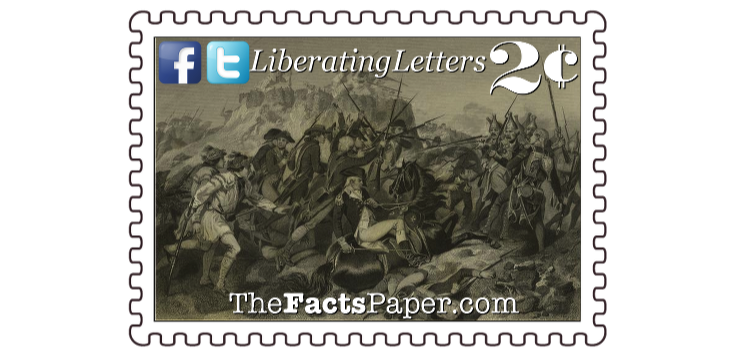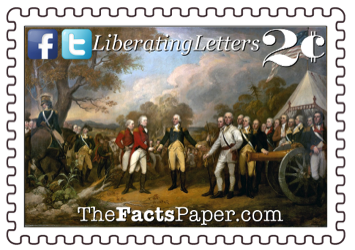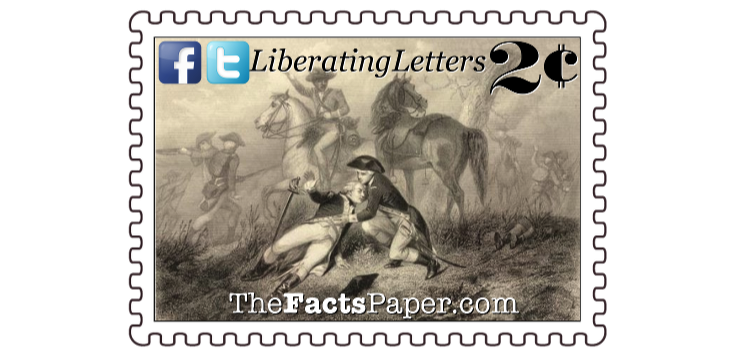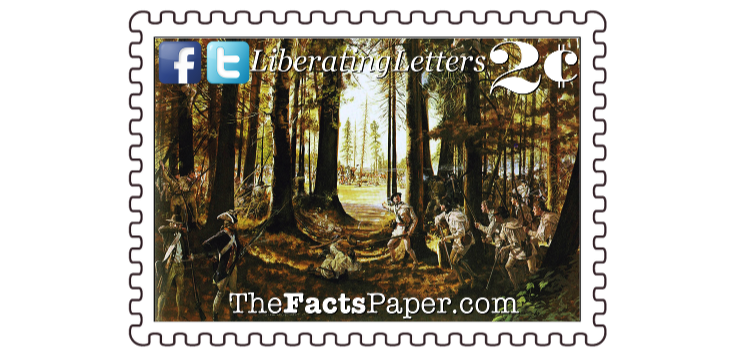Had Arnold’s story ended there, his acts of boldness, courage and leadership during the Battle of Saratoga should have forever cemented him in history as one of American's most admired heroes. Unfortunately, exactly three years later, Arnold met with André on September 21, 1780, to discuss turning over West Point. (see A Tale Of Two Patriots) Arnold chose to betray those he just fought so fearless with, branding him forever a traitor. Nevertheless, Boot Monument at Saratoga National Park honors Arnold's actions that day without acknowledging the man himself.
“In memory of the “most brilliant soldier” of the Continental Army who was desperately wounded on this spot the sally port of BORGOYNES GREAT WESTERN REDOUBT 7th October, 1777 winning for his countrymen the decisive battle of the American Revolution and for himself the rank of Major General.”
After losing over twice as many troops as the Americans over the past several weeks, Burgoyne headed north, taking refuge in Saratoga. While the exhausted men took rest from the battle, the torrential rains, and resulting mud, 20,000 Patriots surrounded them. Left with no other recourse, Burgoyne surrendered to Gates on October 17.
Despite the defeat at Brandywine and the loss of Philadelphia, the events at Saratoga gave new life and energy to the American forces. Moreover, the overwhelming victory convinced France to agree to assist America in her cause against the British, followed soon after by Spain and eventually the Dutch. France’s support in the American Revolution became the ultimate pivot point of the war, which led the colonists to victory, starting with the Battle of Monmouth. (see Sergeant Molly) Therefore, the Battle of Saratoga is considered one of the most decisive battles in not just American, but world history.
One British officer summarized the Americans saying, “The courage and obstinacy with which the Americans fought were the astonishment of everyone, and we now became fully convinced that they are not that contemptible enemy we had hitherto imagined them, incapable of standing a regular engagement and that they would only fight behind strong and powerful works.” From the American viewpoint, Saratoga soldier and future Secretary of State, Henry Dearborn, commented years later that "we had something more at stake than fighting for six pence per day."
Because the battle was so successful, especially on the heels of the defeat at Brandywine, a campaign began to replace Washington with Gates, known as the “Conway Cabal.” An Irish officer in the French Army, Brigadier General Thomas Conway, served with Washington at Brandywine and believed he deserved a promotion due to his efforts. When Washington denied it, Conway began sending letters to Gates encouraging him to pursue replacing Washington. Gates' aide-de-camp, James Wilkinson, became drunk one night and revealed the letters’ contents. As Washington dealt with it internally, his officers rallied support for him to Congress. Eventually, Conway resigned. Gates remained Washington’s subordinate and faltered greatly in his remaining battles, proving Washington was the man for the job. (see The Man Who Refused To Be King)
As a result of Burgoyne’s surrender, Congress felt it appropriate to recognize a national day "for solemn THANKSGIVING and PRAISE”. Therefore, the first official holiday observed under that title occurred on December 18, 1777. (see God's Divine Providence)
Liberty, while most battles do not themselves determine a war’s outcome, occasionally you will have those defining moments of which everything pivots. In the American Revolution, the Battle of Saratoga is considered that moment where the momentum shifted towards the Patriots.
As Christians, our pivot point occurred at the cross. As Christ was crucified for our sins, through baptism we died with him. Therefore, our lives changed as we became new in Christ. As with these series of battles, life is full of ups and downs. We will have battles daily, whether they be personal, with our family and friends, or in society. Sometimes we win and sometimes we lose. Nevertheless, you must always remember front and foremost our pivot point in Christ, because regardless of how the battles turn out, our war is already won.
That’s my 2 cents.
Love,
Mom

September 19, 2018
Dear Liberty,
It had been two years since the Red Coats marched on Lexington and Concord and the British were shocked the Americans were still standing. (see The Shot Heard ‘Round The World) Therefore, the British developed a plan that they were convinced would bring an end to this revolt by the colonists. British General John Burgoyne would travel down from Quebec to retake Fort Ticonderoga, as well as Lake Champlain and the Hudson River valley. (see A Tale Of Two Patriots) Meanwhile, British General William Howe would advance north from New York City, with the two forces meeting in Albany, while Colonel Barry St. Leger marched his troops along the Mohawk River from Ontario. Thus successfully chocking off New England from the southern colonies and halting supply routes. However, fate was not on their side.
Burgoyne began his campaign towards Fort Ticonderoga in June of 1777. He recaptured the fort quite easily on July 6, after the Americans saw his artillery tactically placed on higher ground and aimed at the fort. The Patriots decided to evacuate and fight another day. Following the fort’s capture, Burgoyne continued south, reaching the upper Hudson by the end of the month.
Needing supplies, Burgoyne sent German troops to Bennington, Vermont, in hopes of stealing food, horses, and other supplies from a supply depot. However, a band of militiamen led by General John Stark, which included the Green Mountain Boys (see A Tale Of Two Patriots), confronted the Hessians. The Americans surrounded the invaders, capturing or killing upwards of 1,000 men in the Battle of Bennington on August 16. In addition, many Native Americans abandoned Burgoyne due to the loss. Still low on supplies and now out of substantial amount of troops, Burgoyne chose to continue to Albany.
St. Leger experienced his own American resistance as he led troops of British, Hessians, Loyalists and Native Americans, southward to attack Fort Stanwix. The siege began on August 2 and continued for weeks as both sides held their lines. Lieutenant Colonel Marinus Willett gained some headway as his men raided British and Native American camps, seizing personal items as well as St. Leger's campaign plans. Dispatched with 700 soldiers, Major General Benedict Arnold arrived on August 20 to support Willett. (see A Tale Of Two Patriots)
Running out of time, Arnold offered a deal to Han Yost Schuyler, a captured Loyalist spy. Using Schuyler's brother as insurance, Arnold offer to spare Han's life if he returned to St. Leger's camp and spread rumors that an American force of 3,000 men were on their way. The plan worked as Native Americans began abandoning St. Leger. Left with no choice, St. Leger ended the siege on August 22 and returned to Lake Ontario. Still hoping to meet Burgoyne, St. Leger led his men along the St. Lawrence River to Lake Champlain, reaching Fort Ticonderoga in late September.
Upon hearing of St. Leger's retreat, Burgoyne moved forward still expecting to meet Howe and continue on with their campaign. However, Howe decided to make a detour first. Instead of heading north, Howe loaded his forces on ships at Sandy Hook, New Jersey. They traveled south along the shore before sailing up through Delaware Bay, planning to attack Philadelphia by water. General George Washington correctly presumed Howe was targeting the colonial capital. Therefore he quickly situated his men to block Howe, forcing the British to disembark in Maryland and head towards their destination on land. Word of this change reached Washington, who dispatched his troops along Brandywine Creek to form a barrier. Commanders, including Generals "Mad" Anthony Wayne and Nathanael Greene, placed their troops strategically throughout the area in efforts to protect Philadelphia. (see How The North Was Won and Morgan's Miracle)
On September 11, the forces met at the Battle of Brandywine. Howe, assisted by General Charles Cornwallis, split their troops into two groups, with one moving around to come up on the Patriots' side. By the time Washington realized the Red Coats advancing on the exposed right flank, it was too late to form a viable defense. While the Americans fought valiantly, they were forced to withdraw. In his first battle in the American Revolution, the Marquis de Lafayette continued to orchestrate a calm retreat after receiving a bullet wound in the leg, earning him the respect of the Patriots. (see Hero Of Two Worlds: The American Years) Brandywine was the longest single-day battle of the Revolutionary War, lasting 11 straight hours of continuous fighting. Furthermore, it involved more troops than any other battle in the war, including British Captain John André, Arnold's contact before defecting (see A Tale Of Two Patriots), Major General Henry Knox (see The Bookstore General), Reverend John Peter Muhlenberg (see Who Among You Is With Me?), Captain Daniel Shays of Shays Rebellion (see Reading The Riot Act), Wentworth Cheswell (see The Forgotten Black Founding Father), and a young John Marshall, future Chief Justice of the United States.
PIVOT POINTS


Following the American's retreat, the British were too fatigued to pursue. In a report to the Continental Congress, Washington informed the country his men were down, but not out, stating, "despite the day's misfortune, I am pleased to announce that most of my men are in good spirits and still have the courage to fight the enemy another day". Even so, Congress fled Philadelphia, first for a day in Lancaster before regrouping in York, Pennsylvania. Military supplies were transported to Reading, Pennsylvania, as Howe forged ahead to the capital. In addition, the Liberty Bell was hidden to prevent the British from melting it down for ammunition. (see Let Liberty Ring!)
Further north, Burgoyne continued his march towards Albany unaware that Howe had altered his orders. American General Horatio Gates positioned his men along the Hudson River at Bernie Heights, gaining control of the waterway and hindering Burgoyne's supply routes. The British and American forces met on Loyalist John Freeman's farm on September 19, 1777, drawing arms in the Battle of Freeman's Farm. the first conflict in what became known as the Battle of Saratoga.
Washington sent Arnold, his best infantry commander, as well as Colonel Daniel Morgan with his special Provisional Rifle Corps to defend against Burgoyne. (see The Forgotten Battle and Morgan's Miracle) Recently formed, the 500 man unit was composed of highly skilled sharpshooters from Virginia, Maryland, and Pennsylvania. Known as Morgan’s Riflemen, the unit effectively picked off Burgoyne’s men with ease. By the same token, Arnold had anticipated Burgoyne's strategy and successfully defended against it. However, following an exhausting day of fighting, nightfall brought an end to the battle. Despite the British retaining control of the field, they sustained twice as many casualties as the Americans in another devastating blow to Burgoyne.
Following the battle, Burgoyne decided to wait for reinforcements before attacking the Americans again. Little did he know Howe would soon be in Philadelphia, overtaking the city unopposed on September 26, 1777, as Congress and the military had already left. By the beginning of October, Burgoyne resigned to the fact that Howe was not coming. However, communications with General Henry Clinton proved promising. As Burgoyne waited, the British supplies depleted while American supplies and troops increased.
Realizing Clinton wasn't coming either, Burgoyne decided to move forward with an attack rather than a dishonorable retreat, which he conducted on October 7, at Bemis Heights, nine miles south of Saratoga. However, the Americans were ready. Morgan strategically placed sharpshooters throughout the area and as the British advanced, practically every officer was hit. Burgoyne himself evaded injury and death as three separate sharpshooter bullets pierced his horse, his hat, and his waistcoat.

Originally missing from this battlefield was Arnold. It was no secret Gates and Arnold did not get along. Following the Battle of Freeman's Field, the two had a falling out leading to Gates relieving Arnold of his command. However, not long after the fighting broke out, Arnold was back on his horse and leading the troops in battle. Within an hour, the Red Coats suffered losses of over 400 troops as well as eight cannons. Arnold gallantly rode amongst the crossfire, directing assaults against the British as well as the Hessians. During one of the last barrages of the battle, Arnold's horse was shot. It fell, pinning Arnold's leg beneath the large animal, severely wounding it and effectively ending his fighting career. Shortly after, night fell saving Burgoyne once again from total defeat. Leaving campfires burning to mislead the Americans, he quietly led his men away in the dead of night.


